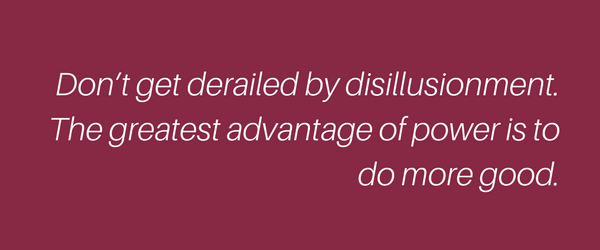Business 101 Series

A CFO was looking at the budget for employee training at his organization and asked the manager, “What if we spend all of this money on training and the employee leaves? The response was, “What if we don’t and they stay?”.
As the greatest asset (and cost) of your organization, are you providing job satisfaction and effectively empowering your workforce to maximize their efficiency?
If the answer is no, you may not have created a culture of self-empowerment and leadership.
In his recent article in Forbes on the future of leadership and management in a 21st-century organization, Brent Gleeson says, “in today’s more volatile, uncertain and ambiguous business battlefield, decentralized controls and leadership through networks of people at all levels is imperative for success.”
So how does an organization become successful in this type of environment? One of the strategies for success in the 21st century workplace is to develop exceptional contributors through self-leadership.
Consider that fifty percent of employees feel their jobs are stagnant. And one out of three just do their jobs, nothing more.* Why is this the case? It’s largely due to the organization’s lack of training, development and empowerment. Three signs that self-leadership is lacking in your organization:
- High turnover
- Lack of contribution
- Low productivity
Imagine how successful your organization could be if every employee became a self-leader who took initiative, resolved problems on their own and actively looked for ways to improve their own performance.
When employees develop the right frame of mind and the right skills, they go from passenger, passively waiting for someone to steer them into action, to driver, proactively navigating to get what they need to thrive and contribute their best.
The Self-Leadership Mindset
 1. Challenging assumed constraints
1. Challenging assumed constraints
Ken Blanchard defines an assumed constraint as “a belief based on past experience that limits current and future experiences.”
For employees to evolve into self-leaders, they need to challenge their assumed constraints.
Believing they lack the power to affect outcomes or take initiative because it’s not specifically spelled out in their job description may be an individual contributor’s greatest assumed constraint.
When your employees challenge their assumed constraints, they put a stop to their negative internal dialogue and take responsibility for pushing their self-imposed boundaries and improving their effectiveness.
2. Activating their points of power
Position or title is just one point of power and perhaps the least important. Helping your employees understand the five different points of power and how to harness them at the appropriate time will maximize their full potential.
“I need…” The most powerful phrase for getting direction and support.
 The five points of power are:
The five points of power are:
- Position power (having a position of authority to allocate budget and make personnel decisions)
- Task power (the ability to influence how a job or task is executed)
- Personal power (having personal characteristics that provide an edge when pursuing goals)
- Relationship power (being connected or friendly with people who have power)
- Knowledge power (experience or expertise).
3. Being proactive
- Accept responsibility for your own growth and progress
- Don’t resist change; contribute to it
These skills ensure that your employees develop to their full potential and become productive in, empowered by, and passionate about their work.
In addition to developing the necessary mindset, self-leaders need to pair this with the right skill set. This includes understanding how to:
- Set goals
- Diagnose where they are in regard to their projects and tasks
- Negotiate for the leadership style from their managers that matches their diagnosis
When employees are proactive self-starters, the organizations change efforts, customer service programs and other initiatives will succeed.
Your individual contributors will know how to get what they need to accomplish their goals. And they will be more satisfied with their work and committed to the success of the organization.
*Source: DDI Pulse of the Workforce Survey
